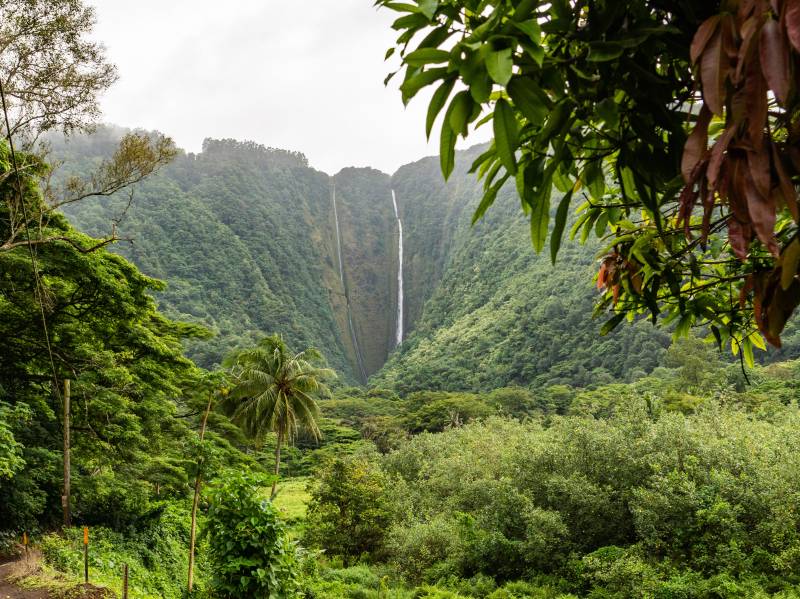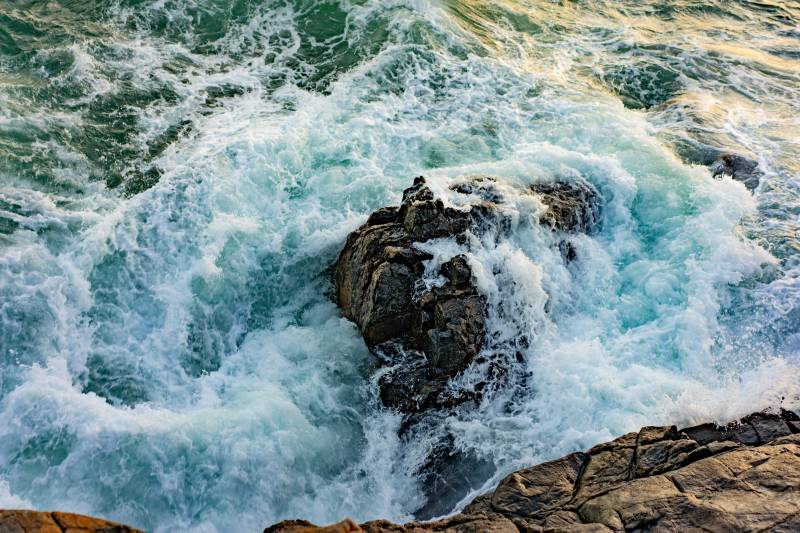Don’t Buy an Oceanfront Property in Hawaii Until You Read This – Part 2
In my last blog post, we looked over some of the things you should be thinking about when looking to buy oceanfront property in Hawaii. This time around, we’re going to look at the things you ought to know about OWNING that same property.
Hawaii can be a bit different when it comes to what homeowners are required to do with their land when it’s on the oceanfront. There are some rules and regulations that you just don’t find in other states. Many of these are to protect our oceans and land, and maintain safe access for those who visit them. Let’s take a closer look at some things to know about owning oceanfront property in Hawaii:
As an Oceanfront Owner: You May Interact with Encroaching Vegetation Regulations

This is one that a lot of folks don’t know about. As mentioned in the previous post, all beaches on Hawaii are open to the public. As such, some oceanfront properties have ‘beach access’ paths adjacent to their property. If you ever visit here and travel down Ali’i Drive in Kona, for instance, you’ll see a plethora of signs saying ‘beach access’ next to private residences. These pathways essentially function as public sidewalks to the public beach.
Keep the Path to the Beach Clear
If you own oceanfront property and have a beach access path on or adjacent to your property, the state has made it your responsibility to keep both the walkway and the beach free of what they term ‘encroaching vegetation.’ This being any vegetation on your property that may grow in such a way as to hamper or impede public access through the accessways and onto the beach. For instance, if you allow a hedgerow to grow down towards the beach, and that hedge then makes it difficult or impossible to access certain parts of the beach, that is a violation and you would be required to trim the hedge back until access is no longer restricted. This is still the case even if your vegetation only impedes beach access at high tide.

It’s the same for those ‘Beach Access’ walkways; if you have something growing across them, you will be required to trim it back to allow the public to pass through. Obstructing the public’s right of access, either intentionally or accidentally, is a misdemeanor offense in Hawaii, and is taken very seriously. This also goes for any structures you may erect on your property that inhibits or prohibits access.
It is NOT, however, your job to maintain the public access-way in any other manner beyond that. The state’s Office of Conservation and Coastal Lands office is responsible for the upkeep of sidewalks, railings, and other access-related structures. So don’t worry that you’ll have to re-pave the walkway.
Not All Properties Have a Public Access-Way
It should also be pointed out that not all properties are adjacent to or contain a public access-way. In fact, in many neighborhoods, if you didn’t go searching for it you wouldn’t even realize that the beach access was there. But occasionally — such as on Ali’i Drive, where there are a lot of houses and properties clustered close together, or on larger parcels of land outside of the major cities — you may find yourself needing to accommodate for these access-ways.
Check out this link for more information about public access-ways.
As an Oceanfront Owner: You May Need to Combat Erosion

This is not something every oceanfront property owner has to deal with, but it is enough of a concern that it’s worth noting here. Erosion can be a serious problem on the beaches of Hawaii. It is, essentially, the leeching away of sand or other substance from the shoreline, effectively causing the beach or shore to ‘disappear’ over time. And if your property has structures near the shoreline, those structures could become unusable as more and more of the shore vanishes beneath the waves. This erosion could also cause the ground could become unstable.
Because it’s a known issue, the state of Hawaii has set up several different suggested responses, everything from simply ‘retreating’ away the eroding shoreline, to shipping in replacement sand or other material, to even building a sea-wall or other erosion-preventing structure on your property. Though, fair warning, permits for structures like seawalls are very difficult to obtain, as they have a tendency to cause damage to the areas outside of the seawall. As such, the state only issues permits for these structures after all other avenues have been attempted and resulted in failure. For more information about the erosion problem in Hawaii in general, take a look at this guidebook.
As an Oceanfront Owner: You May Need to Protect Your Property From the Weather

Hawaii is a tropical paradise — wide-open skies, beautiful flora and fauna, mild temperatures all year round… But like the man said, no place is perfect. One of the things you’ll need to be aware of, especially as an owner of oceanfront property, is the occasional storm that can blow in off of the ocean. Depending on the severity of the storm, and how close your home is to the actual beach, you may need to take steps to prevent flooding as the storm surges drive the surf further and further up the beach towards your structures. It’s not a common occurrence, but it can happen, and it’s something to be aware of.
A common method of protecting your home is to build a temporary wall — usually out of sandbags because sand is a readily-available resource — to keep back the waters when they threaten to encroach. Hotels and resorts along the beachfront often use this method to protect their property when storms threaten to cause flooding. Before you start putting down sandbags, however, there are a couple things you need to know. First, you’re going to need to obtain an emergency permit through the state Department of Land and Natural Resources, which will authorize you to take the measures needed. It’s a relatively painless process, and once you have the approval you’ll be able to protect your home as needed.
The second thing you ought to know is that leaving those protective measures in place for long periods of time could potentially cause erosion and damage your beachfront. Waves coming in from the ocean that hit a wall, for instance, suck beach sand back out with them when they flow out, which eventually can cause significant damage to the beach itself. This is such an issue, in fact, that the state is considering a bill to levy heavy penalties against homeowners who keep these protective measures in place over extended periods of time. And from a simply practical point of view, it’s best to have the structures as soon as they’re not needed in order to keep your beach healthy and your view unobstructed. After all, half of the reason we buy oceanfront property is for the view, right?
One More to Go
I hope you’re finding these articles on oceanfront property in Hawaii informative. I have one more of them up my sleeve, and it’s going to be more of a grab-bag of things you should know about oceanfront properties that don’t really fit into a full article. I hope you find it and these other articles useful in your quest to become or remain an owner of oceanfront property in Hawaii.
Want to Know More?
Whether you are new to real estate or you’ve been doing this for a long time, Hawaii is different than most other states. Getting help from an industry expert is really the best way to go. If you ever have a specific real estate question, just send me a quick email, call, or text. I love talking about real estate, and in particular the topic of real estate investing. I’m happy to help, no strings attached.
Don’t miss out; join my email list, and I’ll send my helpful Hawaii Life real estate blogs directly to you!
Click here to join my email list
Read More of My Blogs
Don’t Buy an Oceanfront Property in Hawaii Until You Read This – Part 1
Fee Simple vs. Leasehold Investment Properties in Hawaii
Beware of Ohanas on Investment Properties in Hawaii
Don’t Buy A Vacation Rental In Hawaii Until You Read This
Is Now a Good Time to Buy an Investment Property in Hawaii?
Should I Buy A Vacation Rental Or Long-Term Rental In Hawaii?




Leave your opinion here. Please be nice. Your Email address will be kept private, this form is secure and we never spam you.